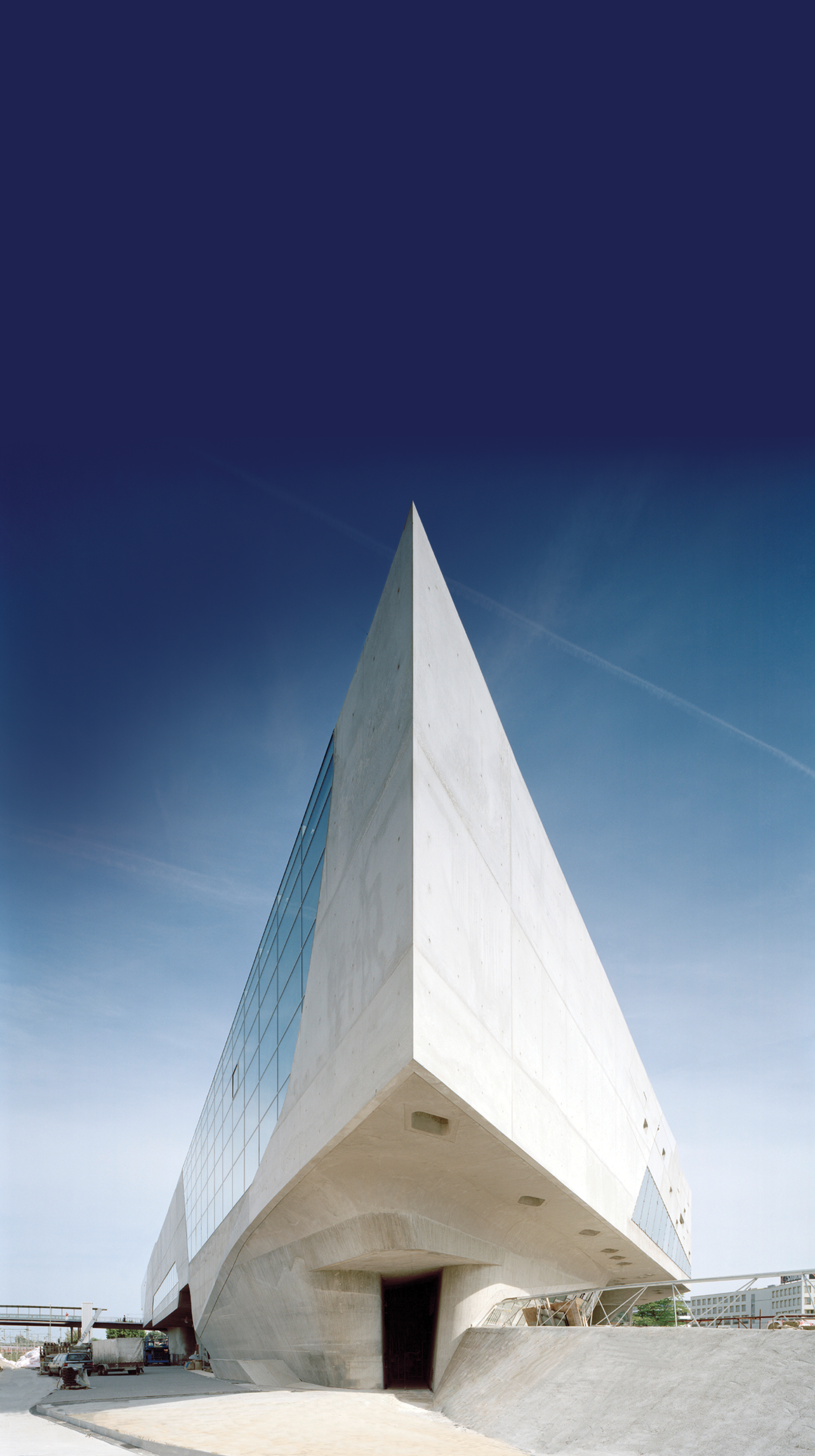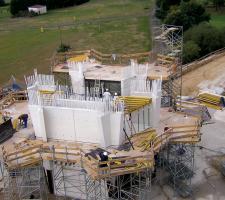
Concrete used to be seen as a functional construction material. Now the growing popularity of fair faced concrete is placing it at the forefront of architectural aesthetics. Claire Symes looks at the role of aggregates in this emerging market
Few can deny that the concrete used to create the sweeping and smooth lines of the Zaha Hadid-designed Phaeno Centre in Wolfsburg, Germany are dramatic. But it is not an experimental project - it is one of a growing number of high profile buildings in Europe that are using fair faced concrete to make an architectural statement.
Nonetheless, the simple aesthetics of these completed buildings belie the complexity and challenges involved in every stage of their construction. Successful use of fair faced concrete calls for careful aggregate and cement selection as well as tight quality control on site during placement.
"There is a growing trend towards fair faced concrete in Europe because of the modern and clean designs that can be achieved," said Doka product specialist Helmut Weissengruber. "Three dimensional imaging combined with new construction methods and the latest formwork solutions are helping to drive wider acceptance of the material.
"Fair faced concrete used to be the preserve of larger, prestigious buildings but we are beginning to see the material being more widely used in residential construction. The initial cost of fair faced concrete may be higher than conventional concrete but if the right controls are used, it offers much lower maintenance costs during the life of the building.
"The trend towards increased use of fair faced concrete is one that we expect to continue in Europe, but careful control at every stage will be essential to ensure the high quality finish that is key to fair faced concrete's current popularity." Officially, fair faced concrete is taken to mean concrete surfaces that fulfil the appearance requirements of DIN 18217 "Concrete surfaces and formwork surface". However, this standard neither mentions nor defines the term fair faced concrete, nor does it set out any precise rules or guidelines for it. According to the German cement industry association Bundesverband der
Weissengruber added that many contractors in Europe do not understand the difference of working with fair faced concrete and conventional concrete and this knowledge can be make or break for the success of a project.
Fines matter
The smooth finish on fair faced concrete is achieved by using a higher fines content - up to 3 or 4% higher than is used in conventional concrete. This higher volume of fines carries the risk of bleeding (the loss of water) during transit or placement, which could result in the aggregate being exposed in the finished face.
Fines used in the mix need to be carefully selected from a source that can supply material throughout the project to ensure the concrete has a uniform colour. Most fair faced concrete projects call for a light finish, which is usually achieved using limestone dust.
Selecting a source that can supply the quantity needed is not the end of the story though - the material must be carefully analysed before use to check its iron content. If this is too high, the finished concrete could quickly end up with pink, orange or grey staining after exposure to the elements. Iron pryrites is also sometimes present in the limestone but staining from this can take two to three years to show.
One industry expert, who asked not to be named, said, "Washing can remove some of the iron content but it is hard to guarantee. Many aggregates companies refuse to supply limestone materials for fair faced concrete projects due to the tight specifications and the high risk of litigation.
"The sedimentary conditions under which these materials were laid down present a strong chance of contamination from other minerals. Igneous sources are much more uniform with less potential for contamination but such materials often do not offer the white finish that is so often desired." Finding a suitable source for fines local to the project is not always easy and the location of the project sometimes dictates what material is used. The coastal position of the
Production control
"Cement is one of the most expensive parts of concrete and many manufacturers favour the use of chemicals to keep the cost down," said Weissengruber. "But this is not good for fair faced concrete. The higher slump needed to create a good finish with fair faced concrete needs to come from careful mix design rather than additives.
"Currently there is no defined recipe specifically for fair faced concrete but existing regulations control around 80% of the mix. Nonetheless, getting the final 20% of the mix design right calls for experience. Studies are underway into fair faced concrete but it will be another two to three years before the results are seen through greater control of mix designs."
According to Weissengruber, quality control during production is critical and the temperature of the mix must also be carefully monitored. "Slight variations in conventional concrete that will eventually be dressed by cladding are not critical, but any variation in the concrete used on a fair faced project will be clearly seen and cannot be 'hidden'," he said.
Many projects calling for fair faced concrete involve casting complex shapes and geometry to achieve the architectural design. To meet both the finish and design requirements, the concrete mix must not only meet parameters for fair faced concrete but must also use self compacting concrete mix design, which further complicates matters.
On site planning
The careful control needed for fair faced concrete extends onto site. "Contractors working with fair faced concrete must invest more on advance planning than they would on a conventional project," said Weissengruber. "Unless they have an experienced site team, they will need to do some training to ensure their workers understand the complexities of working with fair faced concrete.
"Actual pumping of the material onto the site is no different from conventional concrete but the formwork needed to create the right finish is. Fair faced concrete needs special ties within the formwork and the formwork panels have to be treated with a specially designed release agent too".
The release agent application is critical - too much and bubbles will form in the surface of the concrete, but using too little may result in difficulty removing the formwork panels and damage to the final surface.
"The release agent is usually mixed with water and sprayed onto the panels in advance of fixing. Applying the agent is a skilled task, although we are working on developing 'wipers' to remove excess agent and prevent over application problems. But the timing of this process is as important as the coverage - application 24 hours before use is perfect but less than that and the finish may not be as good. Planning application of the release agent and just in time fixing of the formwork into the critical path of the project is vital to ensure the panels are coated at the right time." However, Weissengruber added that on one project overspraying of the release agent was an essential part of the brief. "The architect wanted to achieve a 'bubbled' finish to the concrete! Although this was possible, getting an even spread of bubbles was not easy," he said.
Further growth According to Weissengruber, the only barriers to wider use of fair faced concrete is the number of contractors with experience to take on the work and the way projects are let. "In some countries, such as Switzerland, contracts cannot be awarded to the most expensive or cheapest bidder, which could be a problem for fair faced concrete projects where the quality is critical"

















